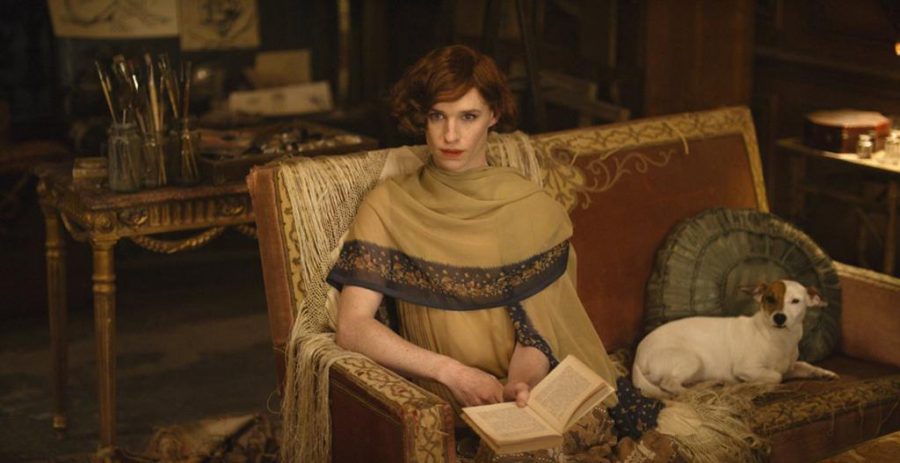Long before Caitlyn Jenner, there was Lili Elbe.
Although one of the first traceable transgendered artists, Tom Hooper’s “The Danish Girl” (Artemis Productions, Pretty Pictures, Working Title and others) is certainly not the first trans story on television or film. The film appears at a time when viewers can see its subject matter for more than just its social cause, but as a work of art.
“The Danish Girl” is about Elbe’s transition and is not simply an exploration of what it means to be transgender, but a bonafide biopic of her life. The film signals that we have arrived in a time when artists can discuss how coming out as transgender changes lives — and not just the definition and morality of the topic.
This is for the best because “The Danish Girl” is much more than just a film about being transgender. Based on the novel of the same name by David Ebershoff, Hooper’s film tells the story of Einar Wegener (Eddie Redmayne) who becomes the first known recipient of gender reassignment surgery — Elbe.
Set in the ’20s in Copenhagen, Denmark, Einar is a successful painter married to his college sweetheart and fellow artist Gerda Wegener — played by rising actress Alicia Vikander (“Ex Machina”). He starts to realize his true self when Gerda needs him to wear a dress and heels and pose for her so that she can finish a portrait. The camera lingers on Einar’s hands as he clutches the dress, and Hooper shows us Einar’s eyes filling with a sense of belonging and comfort as he strokes the hem or adjusts his nylons. The scene holds more weight than a man trying to seem presentable in a woman’s outfit.
When the couple has to attend a party, Einar hates the idea of going, but Gerda must for the sake of keeping up with business peers. So, for fun, Einar dresses in full female attire and goes under the guise of Lili. We see the glee in Einar and Gerda as they try on wigs and makeup — to Gerda, her husband is her doll, but to Einar it’s much more. After that night, Enar accepts who he really is — that Lili had been hidden inside him his entire life but he never accepted it. As Lili’s presence takes over his outward image, Einar slips away.
Redmayne is marvelous in this role. At no point does his performance or commitment waver. He’s naturally charming, and his boyish features always play to childlike excitement.
This excitement comes into play the first few times Einar gets to play dress up, but once he starts realizing that Lili is the real him, it’s no longer just excitement. There’s fear here — it’s 1920s Copenhagen and anti-LGBTQ+ sentiment is the norm.
Doctors recommend treatments to Lili, such as shock therapy — practices that now seem terrifying but at the time were normal. While the movie shows that anti-LGBTQ+ sentiment was worse during that time period — when it was treated as an illness — Hooper’s focus on Lili and her relationships is reminiscent of the societal stigma that remains today. At times, it’s a commentary on contemporary society — that on an individual scale, the experience of coming out and accepting oneself is still met with criticism and obstacles not that different from nearly a century ago.
Redmayne’s performance is heartbreaking when he tries to interact in public as Lili, aware that at any moment others could realize he is still biologically male. Redmayne gives a grand performance that triumphs because of his subtleties as an actor. He changes all of his mannerisms to seem socially female yet reins it in enough that we know he’s spent his entire life until then living as a male.
There’s fear in not being able to be open about it to anyone other than Gerda. Lili can’t even tell childhood friends, who she’s known for years, because his fear of not being accepted is so high. It’s a powerful film built on observation and character maturation — one could say that the lengthy developments could be its only fault.
As amazing as Redmayne is, it was Vikander as Gerda that carried the movie home for me. She shows restraint trying to be the supportive wife as Einar becomes Lili, but slowly realizes that everything she had imagined for the rest of her life has changed. In present day, the story of someone coming out to a spouse is not so uncommon, but “The Danish Girl” shows how out of the ordinary that was for that time.
It’s important to note that Hooper made sure to not cast Gerda as a villain — she stays true to her spouse, and after a slip-up once or twice, she realizes Lili is very real. The viewer never roots against Gerda, but always wants Lili and Gerda to both find happiness.
But putting that on a script doesn’t matter if the performer isn’t up to par. Vikander never overpowers Redmayne’s leading role, but she impacts the people around her in a way that is never forgotten. In a role with few scenes focused on her, Vikander emotes the pain of losing your entire life plan, while still doing everything for the person you love.
Her hesitance to fully absorb the transition is not about anti-trans sentiment or a hatred of Lili, but a hesitance to accept that her husband is truly gone. And when she weeps at that realization, we all wept too.


